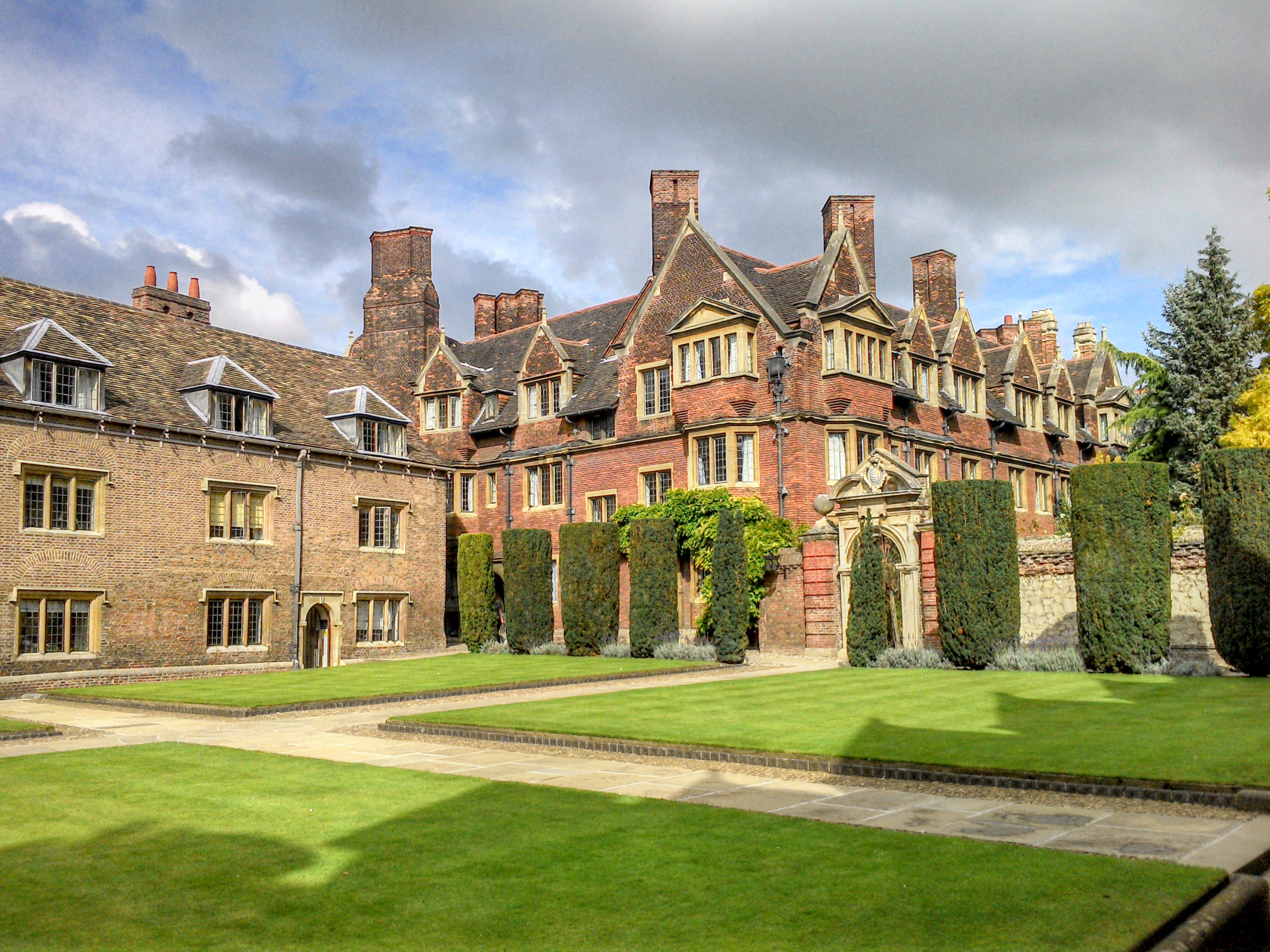Five tall tales
There are lots of stories told about Pembroke, but don't believe everything you hear.
Over the summer, the College is visited by a large number of tourist groups exploring the city as part of organised walking tours. We listened in on their tour guides to uncover some of the urban myths still being shared. Here are our top five:
1. Pembroke is one of the largest colleges in terms of the number of undergraduate students it accepts
Of the 29 undergraduate colleges at the University of Cambridge, Pembroke ranks at around eleventh in terms of size. Pembroke is currently home to around 430 undergraduate students, admitting as it does about 130 each year. Pembroke also admits around 90 graduate students each year. The largest colleges are Trinity and Homerton.

2. The front court was originally dominated by a large tree
It was not until 1984 that the College introduced a walnut tree in Old Court. It was planted to celebrate twenty years since the election of three Fellows.
Over the following years the tree was moved and replanted several times, a fact that is sometimes put down to student pranks.
Twenty years later it was removed because it was secreting juglone and thereby damaging the lawn.
3. Until a few years ago, students of the College were not allowed to speak English
Our Foundress, Marie de St Pol, drew up the original College Statutes, which were written out after her death. They stated clearly that members of the College were to speak in Latin and French when dining in hall. However, in cases of necessity with the waiting staff or when someone could not clearly express their thoughts, another language might be spoken; in practice this was likely to be English.
Today we all speak English around the College, although many of our members speak a host of other languages too!
4. In front of the library is a statue of William Pitt, the man who invented the printing press
Outside Pembroke’s library is a bronze statue of William Pitt the Younger (1759 - 1806). Pitt came to Pembroke in order to study a range of subjects inducing classics, mathematics and chemistry. He then trained as a lawyer and in 1783 became the youngest ever British Prime Minister at the age of just 24.
The statue was created by the British sculptor Richard Westmacott in 1819. Pitt is shown seated on a throne and wearing Roman dress. The statue was made by public subscription and placed at the entrance to the Debt Office. It was then moved to a hidden corner of Hyde Park before it was offered to Pembroke on permanent loan in 1968.
Incidentally, the inventor of the printing press was the German-born Johannes Gutenberg, who lived much earlier (c.1398 - 1468) and has no known connection to Pembroke.
5. Students at Pembroke eat breakfast, lunch and dinner in the College Hall every day
The College Hall at Pembroke is open every day for breakfast, lunch, dinner and Formal Hall. Café Pembroke also offers snacks throughout the day. Many students make the most of these options. However, most do not eat all three meals in Hall each day, but rather cook for themselves in the kitchens – or ‘gyp rooms’ – on their staircases.
Have you heard any other tall tales about Pembroke? Let us know on Twitter using the hashtag #KitSmart.

